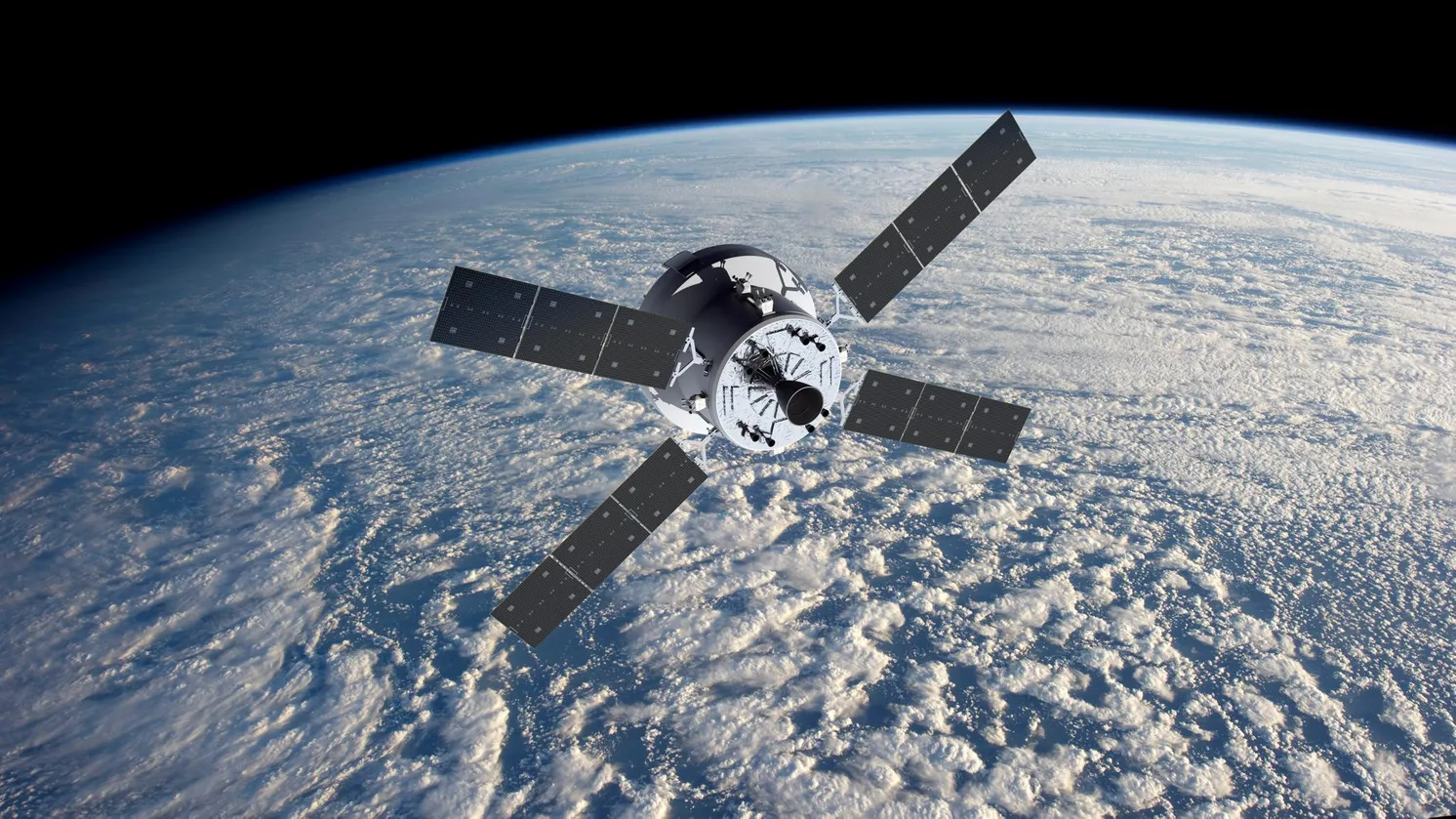Sanatçının Dünya üzerindeki Orion izlenimi. Kredi: NASA/ESA/ATG Medialab
sonu olarak[{” attribute=””>NASA’s Artemis I mission draws near, the Orion spacecraft is on its last full day in space. Splashdown is targeted for 11:39 a.m. CST (12:39 p.m. EST) on Sunday, December 11, off the Baja Coast near Guadalupe Island.
Engineers conducted the final Artemis I in-space developmental flight test objective to characterize temperature impacts on solar array wings from plumes, or exhaust gases. Once the solar array wing was in the correct test position, flight controllers fired the reaction control system thrusters using opposing thrusters simultaneously to balance the torque and test a variety of firing patterns. Engineers will perform several additional flight test objectives after Orion splashes down in the water and before powering down the spacecraft.

On flight day 25 of the Artemis I mission, Orion captured this photo of the Earth from a camera mounted on one of its solar arrays. The spacecraft is now closer to Earth than to the Moon and will splash down on Sunday, December 11. Credit: NASA
The fifth return trajectory correction burn occurred at 2:32 p.m. CST, Saturday, December 10. During the burn the auxiliary engines fired for 8 seconds, accelerating the spacecraft by 3.4 mph (5 feet per second) to ensure Orion is on course for splashdown. The sixth and final trajectory correction burn will take place about five hours before Orion enters Earth’s atmosphere.

On flight day 25 of the Artemis I mission, Orion captured this photo of the Moon from a camera mounted on one of its solar arrays. Credit: NASA
On Orion’s return to Earth, NASA’s Tracking and Data Relay Satellite (TDRS) will facilitate communications for the final return trajectory correction burn, spacecraft separation, re-entry through the Earth’s atmosphere, and splashdown. Shortly before the service module separates from the crew module, communication will be switched from NASA’s Deep Space Network to its Near Space Network for the remainder of the mission. Located in geosynchronous orbit about 22,000 miles above Earth, TDRS are used to relay data from spacecraft at lower altitudes to ground antennas. During re-entry, the intense heat generated as Orion encounters the atmosphere turns the air surrounding the capsule into plasma and briefly disrupts communication with the spacecraft.

During Underway Recovery Test-8 in March, NASA’s Landing and Recovery team from Exploration Ground Systems at Kennedy Space Center performs its first full mission profile test of the recovery procedures for Artemis I aboard the USS John P. Murtha in the Pacific Ocean. Credit: NASA/Kenny Allen
Recovery forces have arrived on location off the coast of Baja where they will stand by to greet the spacecraft after its re-entry back into the atmosphere at 25,000 mph (40,000 km/h). Personnel on the ship are running through preparations and simulations to ensure the interagency landing and recovery team, led by Exploration Ground Systems from Kennedy Space Center in Florida, is ready to support recovery operations. The team consists of personnel and assets from the U.S. Department of Defense, including Navy amphibious specialists and Space Force weather specialists, and engineers and technicians from Kennedy Space Center in Florida, Johnson Space Center in Houston, and Lockheed Martin Space Operations.
Artemis Tam Erişim – Bölüm 6 Artemis Tam Erişim, Artemis I’deki son gelişmelere, görevin arkasındaki insanlara ve teknolojiye ve bundan sonra gelecek olanlara bir bakışınızdır. Ay’ın etrafındaki bu mürettebatsız uçuş testi, bir mürettebatlı uçuş testinin ve Artemis’in bir parçası olarak gelecekteki insanlı Ay keşiflerinin yolunu açacak. Kredi bilgileri: NASA
Ekipler, Orion’u kurtaracak ve iniş sırasında atılan, ön bölme kapağı ve üç ana paraşüt dahil olmak üzere donanımı kurtarmaya çalışacak. Johnson’dan dört kişilik bir mühendis ekibi, kapsülden salınan donanımın ayak izini belirlemek için “Sasquatch” yazılımını kullanarak ABD Donanması kurtarma gemisinde bulunacak. Sasquatch ekibinin birincil amacı, hızlı bir şekilde iyileşmesi için geminin Orion’a mümkün olduğunca yaklaşmasına yardımcı olmaktır. İkincil bir amaç, daha sonra analiz için mümkün olduğu kadar çok ek öğeyi kurtarmaktır.
10 Aralık günü öğleden sonra 2’den hemen sonra, Orion Dünya’dan 113.453 mil (182.585 km) ve Ay’dan 239.432 mil (385.328 km) uzaklıktaydı ve saatte 3.375 mil (saatte 5.432 km) hızla seyrediyordu.
Orion’un yeniden girişinin ve sıçramasının canlı yayını, ajansın NASA TV’sinde saat 11:00 EST’de başlayacak. İnternet sitesive NASA uygulaması. Saat 15:30 civarında bir sıçrama sonrası brifingi planlandı.

